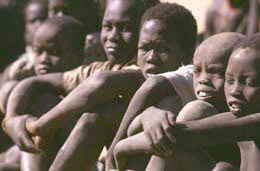It’s no secret that Haitians were responsible for the
abundance of work on the island. Haitians worked on the cane fields in the
Dominican Republic, they also joined the Jamaicans on the sugar estates in
Cuba. It is important to note that the Dominican Republic was actually the
first site of sugarcane cultivation although it did not last past the sixteenth
century. A hierarchy of sorts existed on the island placing those of darker
complexion on the bottom. Slaves that were accustomed to the climate and way of
the island were valued more, as expected. Those that were born on the island
also earned a place above African slaves due to lighter complexion and being
more aesthetically pleasing. Different tasks were allotted to those with
different abilities; Haitians would be found working in the fields whereas more
creolized persons would hold domestic tasks. Certain persons were also
responsible for hunting and gathering food; particularly persons stolen from
Guinea.
In essence,
a system of governance was put into place that would establish various
liberties. Slaves had a degree of freedom, or the inverse of the probability of
coercive limitation in daily life of many rights less often interfered with
among free men. It is evident that slaves responsible for hunting were allowed
to carry weapons and enjoyed fair treatment because of their job status. Those
in the field however, had to bear the greatest burden because they worked the
longest in the harshest conditions, in addition to having the most basic of
necessities to retire to at the end of a long day. Codes were put in place to
dictate the treatment and punishment; in most cases death was warranted but for
misdemeanors, there were more gruesome torture methods.
 It’s ironic
how the most elite people were the ones that were subjected to the worst
conditions. West Africa’s resource lacking environment accounted for a durable
biological makeup, and they were more adapted to surviving in the tropics than
Europeans. Africans were the immunological elite in the Caribbean; their
ancestors endured a plethora of nutritional deficiencies and diseases.
Sickle-cell anemia was a mutation that specifically resisted Malaria. Yellow
fever and Malaria wiped out a great deal of Europeans because their bodies
weren’t adapted to withstand these diseases. Also, slaves being born with the
sickle-cell mutation were valued more because of their ability to withstand disease and
also being native to the island.
It’s ironic
how the most elite people were the ones that were subjected to the worst
conditions. West Africa’s resource lacking environment accounted for a durable
biological makeup, and they were more adapted to surviving in the tropics than
Europeans. Africans were the immunological elite in the Caribbean; their
ancestors endured a plethora of nutritional deficiencies and diseases.
Sickle-cell anemia was a mutation that specifically resisted Malaria. Yellow
fever and Malaria wiped out a great deal of Europeans because their bodies
weren’t adapted to withstand these diseases. Also, slaves being born with the
sickle-cell mutation were valued more because of their ability to withstand disease and
also being native to the island.
One may
ask, why weren’t there more successful revolts? Europeans did a fairly good job
of preventing slaves from gathering and conspiring. They were not allowed to
gather, even for weddings. They didn’t have access to armaments that would’ve
allowed them to overpower their masters. The link between plantations was
removed in order to prevent an uprising. Haitians were eventually successful in
revolting and achieving emancipation, not to say it was short lived, but years
later Trujillo led a massacre of about 15,000 Haitians. The uprising led to a
serious problem of migratory labor, emancipation was enjoyed for about a
century, which led to freed slaves migrating to the Dominican Republic.
Europeans
were unable to use indigenous peoples for coerced agricultural labor, so
Africans were imported. They found that sugar production was poor in Santo
Domingo and was short lived but thanks to the Columbian exchange, they were
able to focus on the cultivation of livestock. However the French made a lot of
profit from sugar production in Saint Dominique and followed a very brutal
system of slavery.
Although
the island was shared between France and Spain, the two had very different
systems. The French were entirely more brutal and profit based whereas the
Spanish realized sugar wasn’t working and shifted their focus elsewhere; also
their treatment of slaves was far more humane.
